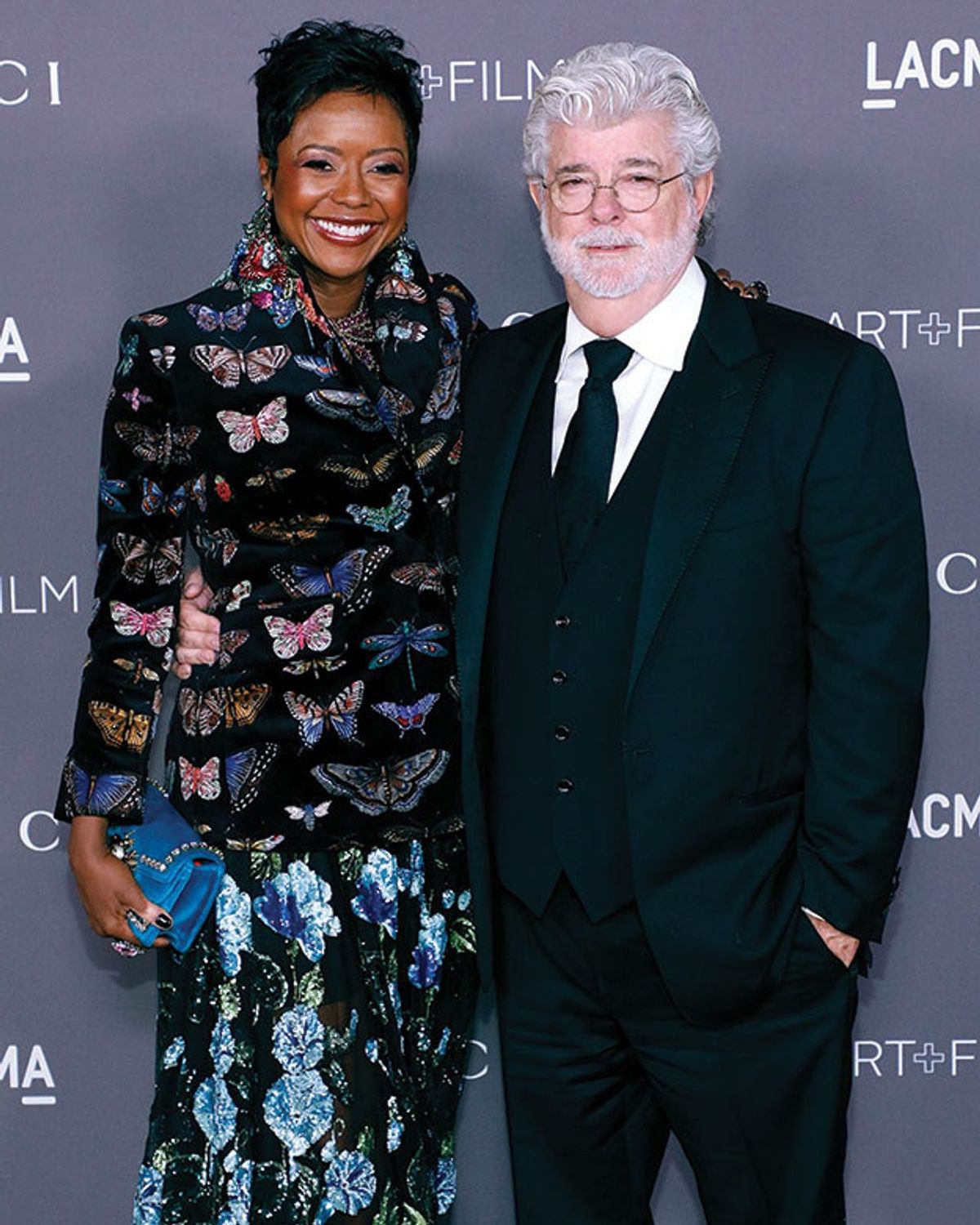When the filmmaker George Lucas announced his plans to build the Lucas Museum of Narrative Art nearly a decade ago, the idea of “narrative art” seemed as flimsy as a makeshift Hollywood stage set. To many, it simply seemed like a superficial way of grouping the comics, illustration art and Norman Rockwell paintings that Lucas has long collected along with some beloved Star Wars art, costumes and other artefacts from the extensive Lucasfilm Archives.
But these days, with construction of the museum in Los Angeles well under way (the projected opening is in 2023) and a string of recent acquisitions, the museum’s interest in visual storytelling and mythmaking—as well as myth-busting—is evolving. The focus is extending well beyond the fantasy of an innocent white America featured in Rockwell’s work to include art by major Black and Latino artists.
The more expansive and inclusive vision comes both from Lucas and his wife, Mellody Hobson, a prominent Black business leader and philanthropist whom he married in 2013. And it was reflected in some acquisitions by the museum’s founding director, Don Bacigalupi, most notably the archive of the artist Judy Baca—around 350 objects from sketches to correspondence—from her epic 1970s (and still ongoing) mural project about California’s multicultural history known as The Great Wall of Los Angeles.
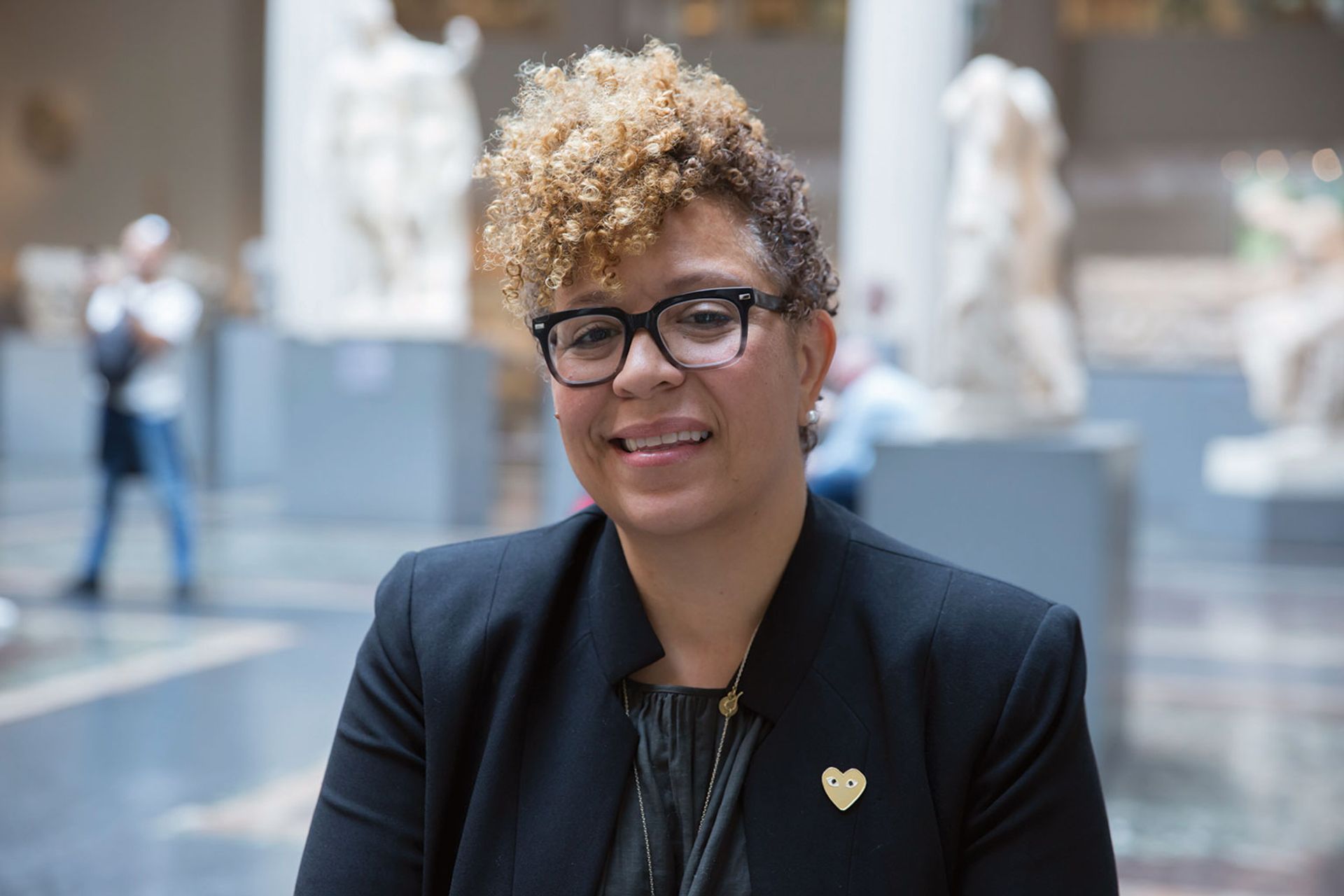
Sandra Jackson-Dumont joined as the museum's chief executive and director in January 2020 Photo: Rebecca Schear; courtesy of the Lucas Museum of Narrative Art
But the institution’s expanded mission has become even more substantial and visible under its new leadership: the chief executive and director, Sandra Jackson-Dumont (previously head of education at the Metropolitan Museum of Art in New York), and the chief curator, Pilar Tompkins Rivas (formerly head of the Vincent Price Art Museum in Monterey Park, California). Since their appointments in 2020, the museum has made several important purchases.
In September it bought privately a painting that was in Alice Neel's retrospective at the Metropolitan Museum of Art, Fish Market (1947), which shows the friendly commotion of an East Harlem market. In May it paid $15.3m, including fees, at Sotheby’s for Robert Colescott’s rambunctious send-up of a history painting, George Washington Carver Crossing the Delaware: Page from an American History Textbook from 1975. Late last year it bought one of Frida Kahlo's celebrated self-portraits, Self-Portrait Dedicated to Dr Eloesser (1940). And in a less publicised acquisition in October 2020, the museum paid $2.13m against a pre-sale estimate of $1m to $1.5m at Christie’s for The Triumph of Galatea (around 1650), a Baroque painting of the nymph from Greek mythology, attributed to Artemisia Gentileschi and associate.
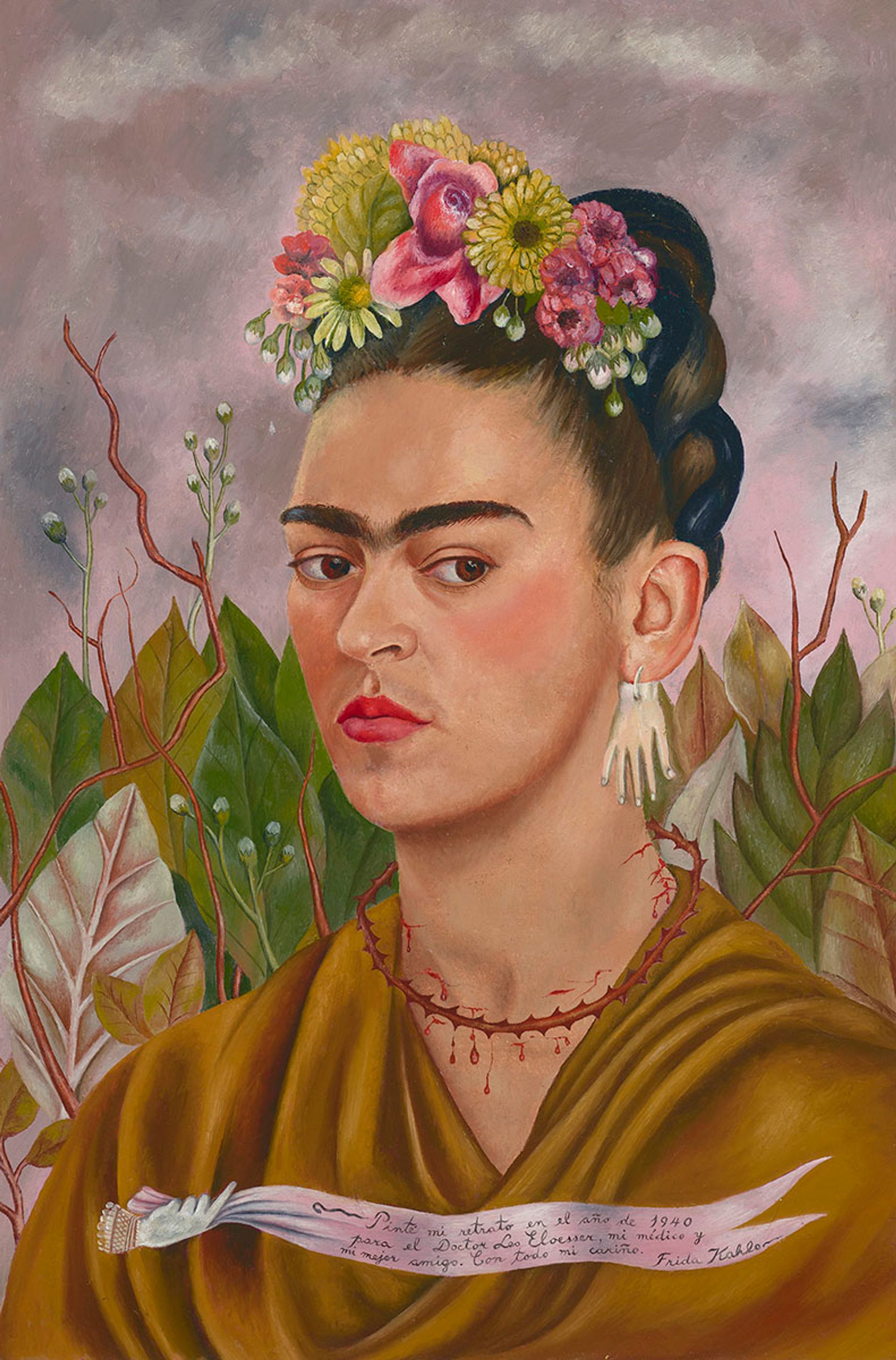
Frida Kahlo’s Self-Portrait Dedicated to Dr Eloesser (1940) was acquired late last year by the Lucas Museum of Narrative Art © 2021 Banco de México Diego Rivera Frida Kahlo Museums Trust, Mexico, D.F. / Artists Rights Society (ARS), New York. Photo: Randy Dodson, courtesy of the Fine Arts Museums of San Francisco
Supporting artists more directly, it also recently acquired Criselda Vasquez’s The New American Gothic from 2017. The painting puts the artist’s weary and wary-looking Mexican immigrant parents—her mother holds a bucket of household cleaning supplies—in place of the farmers in Grant Wood’s original 1930 composition. And the museum scooped up Kadir Nelson’s Art Connoisseurs (2019), a painting that updates Rockwell’s 1961 painting The Connoisseur, featuring a white man in front of a vast drip painting, by showing a Black couple looking intently at graffiti.
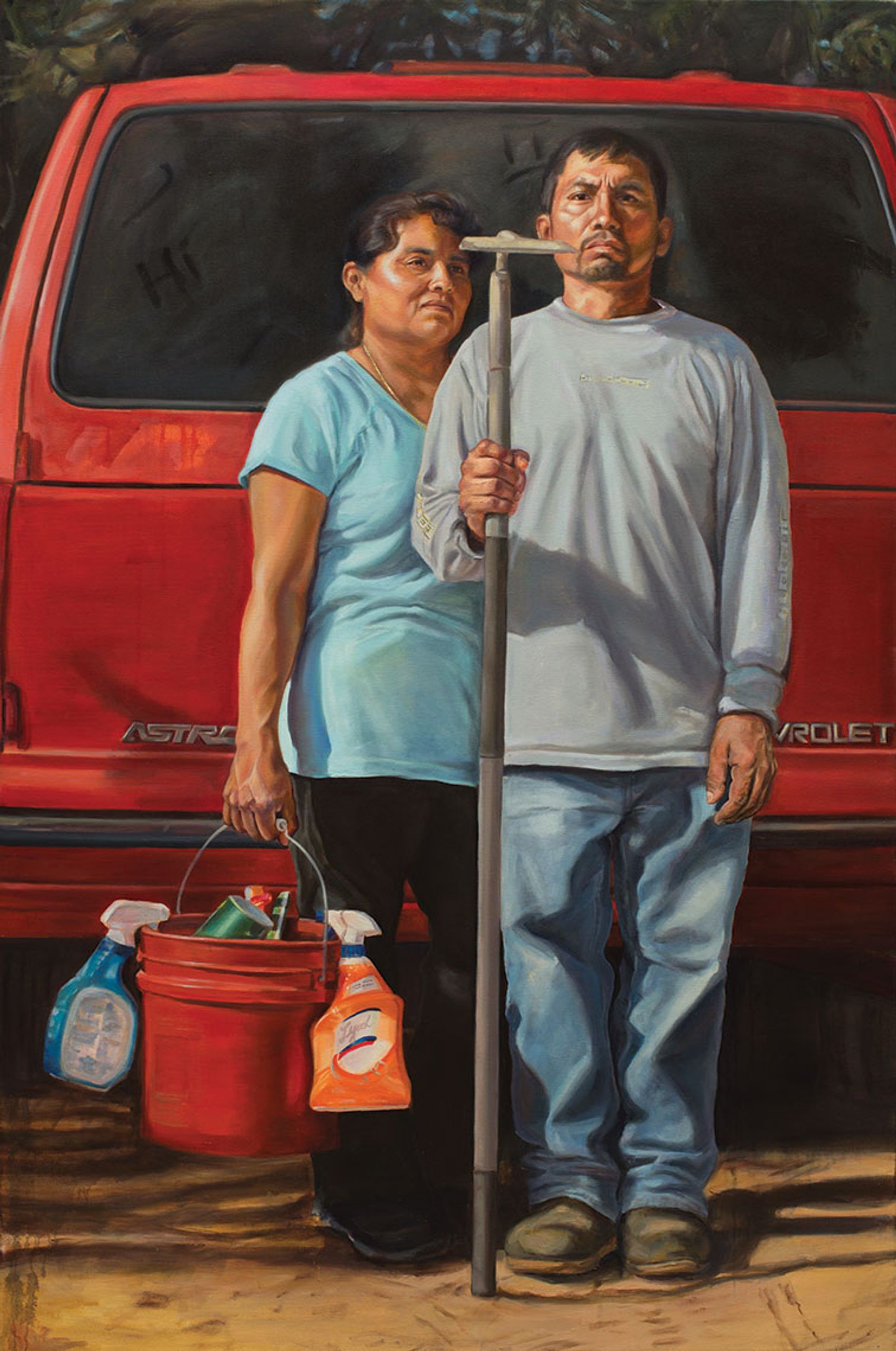
Criselda Vasquez's The New American Gothic (2017) portrays the artist's parents in place of the farmers in Grant Wood’s original 1930 composition Courtesy of Criselda Vasquez
Serendipitous encounters
While some may feel that Rockwell and Baca, or Gentileschi and Star Wars illustrator Ralph McQuarrie, are strange bedfellows, the museum’s leaders are sanguine. “What would be fantastic is if people came looking for Star Wars and learn about Ralph McQuarrie and then they learn about Gentileschi,” Jackson-Dumont says. “If they come for Star Wars and leave having seen Kara Walker. Or they come for Gentileschi and leave loving the Hernandez brothers,” she says, referring to the Chicano comics creators.
After previous attempts to build the new museum in San Francisco and Chicago were thwarted, Lucas found a home for the space in Los Angeles in 2017. It is located in a museum-rich area called Exposition Park at the edge of south Los Angeles, an area with a sizeable Black population that has been eclipsed in recent years by an influx of Latino families. Designed by Ma Yansong of MAD Architects and situated within a new 11-acre park, the futuristic-looking building will boast around 100,000 sq. ft of gallery space.
The museum’s collection is strongest in 20th- and 21st- century art but begins around 2100BC with an Egyptian polychrome relief that depicts the afterlife of an elite official, and includes some Renaissance paintings as well. The through line, which goes against the grain of so much conceptual art being made today, is a sort of populism: an emphasis on the power of art to reach people, which both the director and chief curator describe as “legibility”.
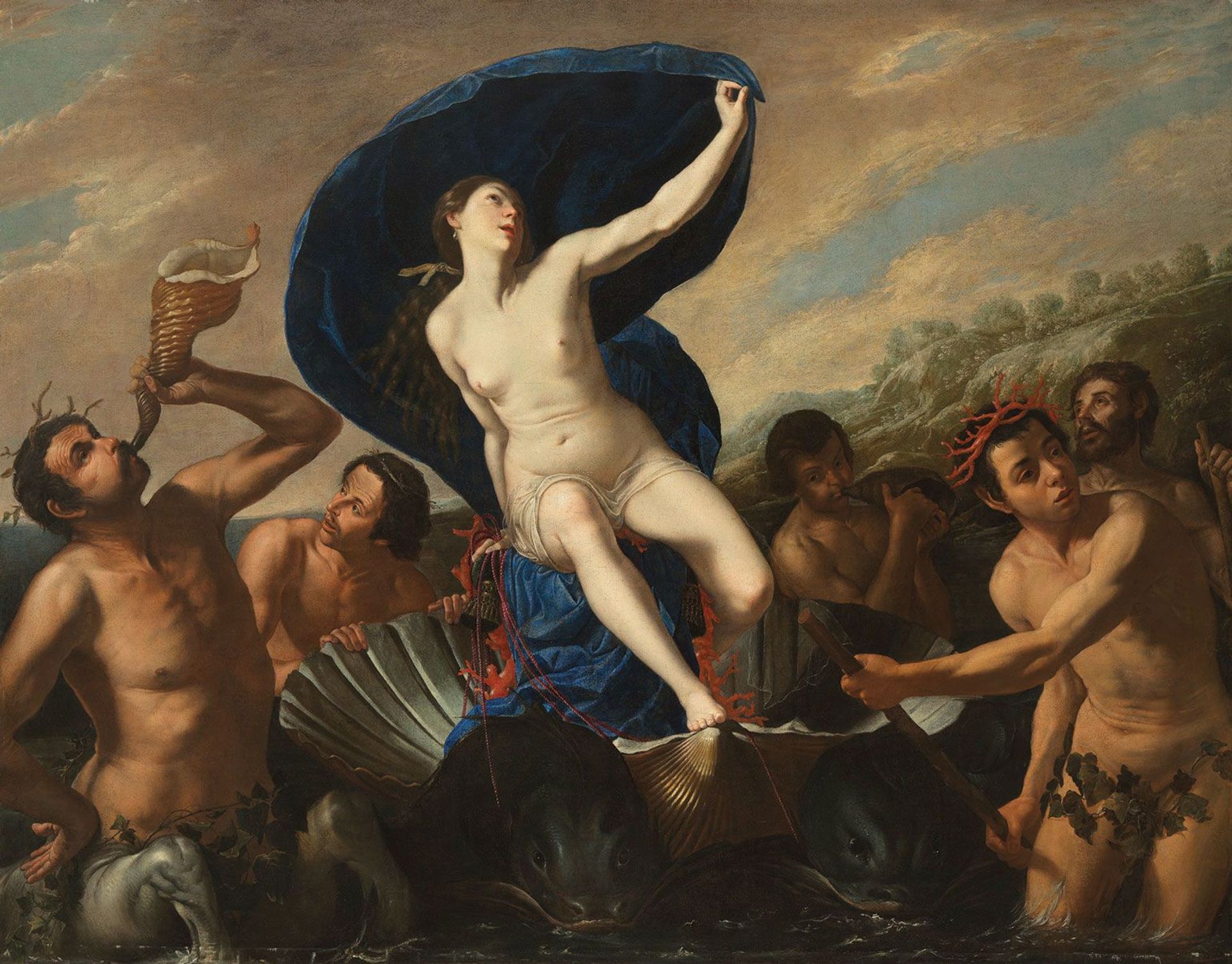
The Triumph of Galatea (around 1650), attributed to Artemisia Gentileschi and associate, was purchased for $2.13m from Christie's in October 2020 Christie’s Images
The collection includes other important Black artists, such as Kerry James Marshall, Carrie Mae Weems, Jacob Lawrence and Charles White. A new area of focus is Mexican calendar art by popular artists such as Jesús Helguera.
“You can go to any tortilla or tamale factory in the United States and you can find an image by Helguera on it, and that’s what people have in their homes,” Tompkins Rivas says. “By being able to collect the original artworks, we know that will resonate with audiences from our community who have lived with those types of images for generations.”
While Lucas declined to be interviewed, Jackson-Dumont says that he has been heading in this more inclusive direction for a while. “There’s been so much talk about Rockwell, N.C. Wyeth and [Maxfield] Parrish that people don’t understand how much else he’s collected over time,” she says.
“It’s not something that’s very publicly known, how diverse [Lucas and Hobson’s] collection is,” Tompkins Rivas adds. “That’s something that will unfold as there is more discussion around the museum, and who they are as patrons of the arts.”


